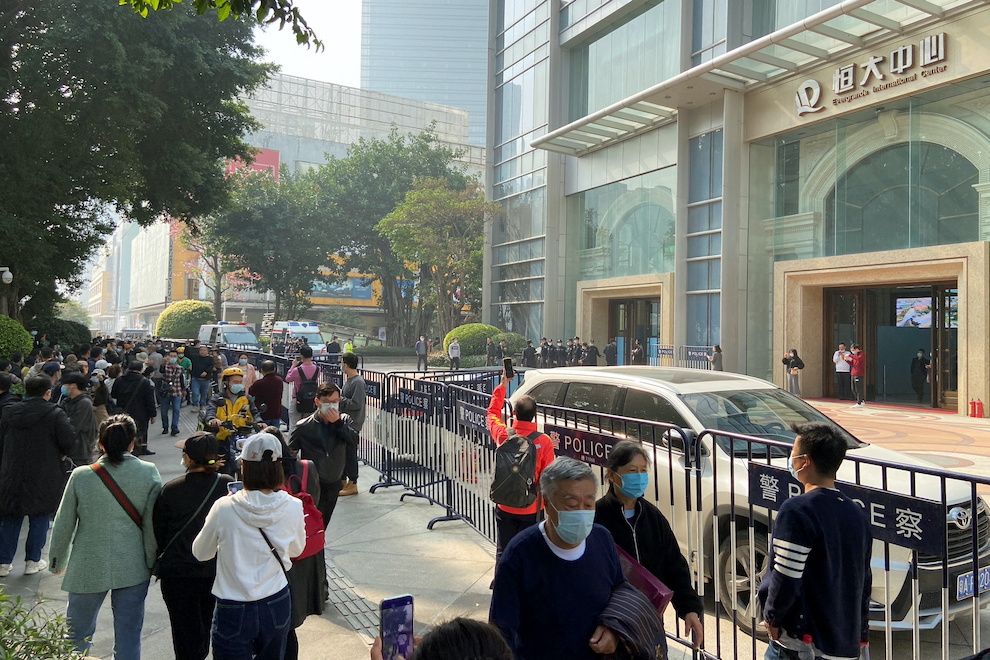Strikes at Chinese factories have surged to a seven-year high and are seen becoming more frequent as a global slowdown hits workers’ pay and shuts down plants.
Exports and factory output sank further in May, as looming as companies in the United States and Europe cut orders for goods made in China.
Some factories closed or are struggling to pay wages or severance for laid-off workers as a result, according to Chinese labour researchers.
That has led to a spike in labour disputes that hurts consumer and business confidence just as it was recovering from three years of Covid-19 curbs, they said.
ALSO SEE:
PBOC Cuts Lending Rate as China’s Economy Slows in May
140 factory strikes over first five months
“We believe that the drop in manufacturing orders and that factory closures will continue,” Aidan Chau, a researcher at Hong Kong-based rights group China Labour Bulletin (CLB), said.
“Bosses want to cut costs by simply dumping workers.”
CLB recorded over 140 strikes at factories across the country in the first five months of this year, the highest since the 313 recorded during the same period in 2016.
The rights group’s data is mostly based on protests reported on social media, some of which CLB has been able to verify through contact with unions or the factories, although not all reports are verified.
Many of the strikes are concentrated in China’s manufacturing heartland of Guangdong province and the Yangtze River Delta, and involve exporters, including from garment, shoe and printed circuit board factories, CLB said.
In one video referenced in CLB’s mapped log of nationwide strikes, dozens of female workers at Zhong Min Sportswear Goods Shenzhen Ltd walk out of a factory compound.
The video was published on May 24 on Douyin, China’s version of TikTok, and captioned “this boss paid off law enforcement and is cheating workers’ money”.
Another video posted by the same user shows a factory manager reading a document denying workers compensation, while workers demand that an independent third party intervene.
In another video published on May 26, a handful of workers stand on the roof of Shenzhen cable factory Xin Dian Cable Ltd, holding a banner that says “the boss owes us wages”. Another video published last week shows the company’s workers debating compensation with a company lawyer.
“You need to collect workers’ grievances and pass them on,” one female worker says.
Reuters verified the location of the videos and photos through matching the signage and building features with street view data, but could not confirm the timing of the protests. Calls to Xin Dian went unanswered. A person picking up the phone at Zhong Min said she could not comment.
The Douyin users did not respond to messages from Reuters. Participants in protests are often monitored by security forces.
China’s Ministry of Public Security, Ministry of Human Resources, the Shenzhen police and the All-China Federation of Trade Unions – a state-run umbrella organisation for all unions in the country – also did not respond.
Pay cuts, layoffs ‘stem from overcapacity’
Chinese factories, which produce a third of global manufactured goods, form complex supply chains that ultimately rely much more on exports than domestic demand, leading to giant trade surpluses in the $18 trillion economy.
Manufacturers make use of a workforce of hundreds of millions of rural migrants, many of whom are on temporary contracts or hired informally, labour activists say.
This leaves workers vulnerable to unpaid overtime, impromptu pay cuts, or layoffs without due process or compensation, as factories look to reduce costs.
Workers find it hard to win in any conflict. Security forces intervene early to disperse protesters and censors scrub evidence of disputes on social media.
Labour unions were central to the Communist Party’s proletariat beginnings but play only a marginal role in modern authoritarian China.
However, some analysts say factory strikes could become a political headache for the Party.
“Firms are adapting to the reality of overcapacity through pay cuts and layoffs,” said Xu Tianchen, senior China economist at the Economist Intelligence Unit.
Job and salary cuts “will not only be detrimental to growth, but could also become a source of instability,” Xu said.
- Reuters with additional editing by Jim Pollard
ALSO SEE:
Chinese Companies Prepare for Weaker Yuan as Rate Cuts Loom
China’s Exports Sink by 7.5% in May Amid Global Slowdown
China Reports Weak April Data, Record Youth Unemployment
























